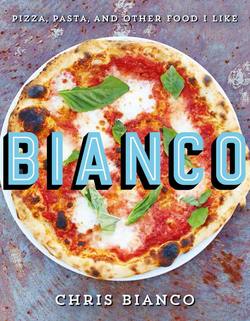Читать книгу Bianco: Pizza, Pasta and Other Food I Like - Chris Bianco - Страница 15
ОглавлениеOver the years, a number of people have asked me how I invented this pizza. The thing is, to my mind, a chef laying claim to invention is a rejection of inspiration, of influence, of history. The Rosa is entirely me paying homage to an inspiration. Almost thirty years ago, I spent an afternoon in Finale Ligure, an old port town in Liguria. I had lunch at a little focacceria. For Ligurians, focaccia—specifically focaccia Genovese—is what pizza is to Neapolitans, and Liguria is known throughout Italy as the home of the best focaccia in the country. The focacceria in question was next door to a salumeria, and it turned out that a father-son duo ran the two shops. The menu at the focacceria was short and sweet. I ordered a simple but unusual Parmesan and sesame seed focaccia. The son brought it out on a small plate, on which were nestled a few delicate shavings of cured meat from the salumeria. As I ate, I would drape a bit of meat on a bite of the bread and follow that with a cold sip of a white wine from Veneto. The whole thing was transcendent. It was way better than it had any right to be.
As soon as I got home, I tried replicating it. No dice. First of all, my pop didn’t run a salumeria next door to me. I attempted to get it right a few more times, but the results were always disappointing; nothing I made could match the impact of that Finale Ligure focaccia. I knew part of it had to be the sesame seeds. The town had a long history as a stop for ships bearing goods from Asia and Africa, and its cuisine reflects that influence. And there, the sesame seeds, delicate and volatile, hadn’t had to travel for nearly as far as they would to reach me in Arizona. So I started thinking less about how to copy the focaccia and more about how to evoke its spirit. What was it that had spoken to me so urgently? Well, I loved how it did so much with so little. I loved its connection to place, how something as small as a sesame seed symbolized the town’s unique history and culture. I loved the play and echo of the nutty seeds against the Parmesan, which already has that quality of nuttiness.
I started thinking about what we had of worth in Arizona, of the singular ingredient, like the sesame seeds, that would remind people that what they were eating was from somewhere. What I came up with was our pistachios, grown here and plentiful in southern Arizona, fresh, bright, and beautiful married with some Parmigiano-Reggiano. But the pistachios and Parmesan needed something else, something with a spice to it. We had tons of rosemary growing around our building, and the woody herbaceous quality of the bruised leaves went perfectly with the nuts and cheese. I was getting close, but I found I wanted another texture. There was something about that original, by now mythic, focaccia that had reminded me of the bialys of my childhood. And the best part of those bialys was the melted, chewy onions that tended to collect at their centers. So I added red onions, sliced thin and tossed in olive oil until they wilted, and the Rosa was born: I named the pizza after the pink of the red onion.
This is a pizza of restraint that delivers tenfold on its first bite.
Makes one 10-inch pizza
One ball Pizza Dough, rested and ready to shape
3 ounces Parmigiano-Reggiano, coarsely grated
Scant ¼ cup paper-thin slices red onion
Leaves from ½ rosemary sprig
A small handful of unsalted roasted pistachios, crushed
Extra virgin olive oil, for drizzling
Position a rack in the lower third of the oven (remove the rack above it) and place a pizza stone on it. Turn up your oven to its maximum setting and let that baby preheat for a solid hour.
Once the oven is preheated, grab a pizza peel and give it a nice, light dusting of flour. Shape the dough as directed and set the dough on the floured peel. Jerk the peel to make sure it’s not sticking. If it is, lift the dough and dust the underside with extra flour (or, if no one is looking, blow under it very gently). Tuck and shape it until it’s a happy circle.
Scatter the Parmigiano evenly over the pizza, stopping about ¾ inch—a fat thumb’s width—from the edges. Scatter the onions and then the rosemary—pinching it to lightly bruise it and release its oils as you go—evenly over the top.
Open the oven and, tilting the peel just slightly, give it a quick shimmy-shake to slide the pizza onto the pizza stone. After about 5 minutes, quickly scatter the pistachios over the pizza. Bake the pizza for 5 to 10 minutes longer, until the crust is crisp and golden brown.
Remove the pizza with the peel and drizzle with a good glug of olive oil. Enjoy immediately!
PISTACHIOS
Arizona has beautiful pistachios. We get ours fresh from some kind Greek Orthodox monks in the southern part of the state. We roast the nuts slightly, so they’re more stable, and give them just a little bash with a pestle to break them up. Then we scatter them on the pizza about halfway through cooking so that they are warmed just enough to release their oils, without scorching them.
